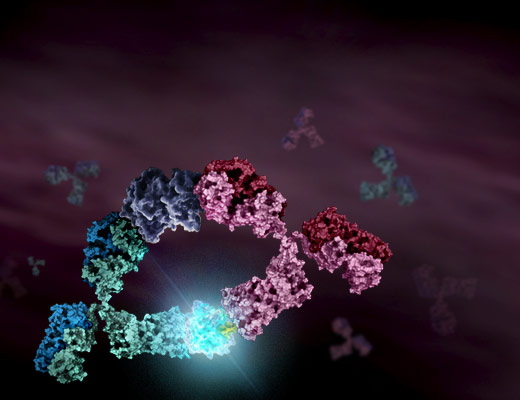Inflammation Assays
Assays to measure markers of inflammation or inflammasome activation include measurement of caspase-1 activity and cytokine release from cells, along with assays to detect damage associated molecular patterns (DAMPs).
We provide assays to directly measure inflammasome activation through caspase-1 activity or release of processed IL-1β in cell culture samples. Assays to detect DAMPs include the RealTime-Glo™ Extracellular ATP Assay, which detects extracellular ATP, a key marker of immunogenic cell death. The assays have simple, add-mix-measure protocols to allow easy detection.
The inflammation assays are ideal for multiplexing with additional markers of cell health and for automated high-throughput screening applications.
Filter By
Shop all Inflammation Assays
Showing 21 of 21 Products
An Introduction to Inflammation Assays
As more attention is focused on the role of inflammation in a wide range of human disease, the ability to measure inflammasome activation is increasingly valuable. The role of inflammation in innate immunity is to protect us from infectious disease. However, disorders linked to chronic inflammation, including neurodegenerative disorders, obesity, liver disorders, atherosclerosis and others is a growing medical challenge.
Inflammasomes are protein complexes induced by a diverse set of inflammatory stimuli. Innate immune cells respond to pathogens and other danger associated molecular patterns with the formation of various inflammasomes, including the NLRP3 inflammasome, and the activation of caspase-1. Caspase-1 activation leads to processing and release of cytokines IL-1β and IL-18, and an immunogenic form of programmed cell death called pyroptosis.
Three complementary assays can be used to monitor inflammasome activation or inhibition, and support drug discovery efforts targeting the NLRP3 inflammasome and other inflammasomes. Caspase-Glo® 1 Inflammasome Assay directly measures activation of caspase-1 upon formation of the inflammasome. The Lumit® IL-1β Immunoassays detect processed IL-1β released from cells after inflammasome activation. Finally, a NanoBRET® Assay for NLRP3 quantifies target engagement in live cells. Contact us for more information about the NLRP3 NanoBRET® Target Engagement Assay. These assays provide a means for high-throughput screening of inflammasome modulators.
Additional pro-inflammatory cytokines, such as TNF-α, IL-2 and IFN-γ, play roles in both innate and adaptive immunity, including T cell activation. Lumit® Technology makes detecting these key markers fast and easy, with no-wash assays complete in 70 minutes using a standard luminometer.
Immuno-oncology efforts to activate the immune system in fighting cancer and other diseases show great promise. An emerging trend is identifying treatments including certain small molecule chemotherapeutic drugs, antibody-drug conjugates and oncolytic viruses that induce immunogenic cell death. To identify these inducers, you can use assays that detect damage-associated molecular patterns, such as extracellular ATP. The RealTime-Glo™ Extracellular ATP Assay detects the release of extracellular ATP in a live-cell kinetic manner, enabling identification and rank-ordering of therapeutics that induce immunogenic cell death.



